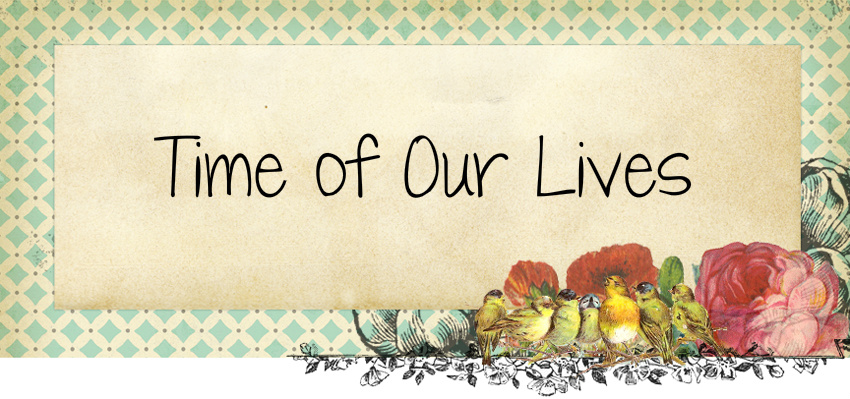I decided to try a different type of blanket to give out to the new babies in our ward. I had seen faux chenille blankets around for a couple of years, and then my daughter, Whitney, made one, so I thought it might be fun to try one myself. I started by getting 4 different pieces of fabric -- all 1-1/4 yards long.
I layered them with the bottom piece, right side facing down on the table. The next piece, I placed on top of the bottom piece with the right side facing up. The last two pieces were both placed on the pile with right sides facing up. So, to restate: the bottom piece is right side facing down, and then the other three pieces of fabric are right sides facing up. As confusing as that is, it ends up not really making too much of a difference how some of those fabrics are placed. I would say that the top and bottom pieces of fabric are the ones that need to be right sides facing out for sure. Now that I have probably thoroughly confused you, we'll move on...
After all of the layers were placed in the stack, I pinned them all together with several pins -- probably about every 5 inches all ways, so it is held together pretty well. I marked a line with disappearing ink going from one corner to the opposite diagonal corner in a straight line. I then stitched on that line. From that stitched line, I sewed the next line about 1/2 " away, and so on, and so on, until I had one half (diagonally) of the quilt done. Then, do the same thing for the other half.
You can see the lines of stitching in the photo below...
When I was done with all of the diagonal lines, I trimmed the edges down so that they were fairly square (I'm not a perfectionist on projects like this!) and even.
With the quilt stitched, it was time to cut through the fabric. The important thing to remember is that you are cutting through three layers only, leaving the bottom layer intact (or else you will have lots and lots of tiny strips of fabric instead of a quilt). Originally I had wanted my brown side to be the bottom of my quilt, but I decided the stitching showed up a little too well, and showed my imperfections more than I wanted, so I flipped it over, and made the blue side the bottom. The middle two fabrics were going to show about the same either way, so I knew that wouldn't be a factor.
To cut the quilt, use a chenille scissors. It is made for this very type of project, and makes it easier to cut through the layers. I cut lines between every stitched line, as shown in the photo above. Remember, cut through only three layers, leaving the bottom layer intact.
You'll notice it doesn't look much like chenille yet. That will all happen in the laundering process.
The next step is to sew the binding on. I like to cut strips at a 45 degree angle, so that they are cut on the bias. That way, they don't get stringy and fray too much in the wash. I also cut my binding with a rotary cutter that has an edge like pinking shears. After cutting the strips, sew them together and iron the finished, long strip so that it is folded down the middle for the entire length.
I wanted the binding to be scrappy, so I left the raw edge on it instead of turning it under.
After the binding was sewn on, I threw it in the wash to get it all soft and cozy and looking more "chenille-ish".
It is an easy project, but maybe more time-consuming than I was hoping. After it was all said and done, I decided to stick with the type of blankets I had been making before, and I'll use this little gem to snuggle my future grand babies in!





No comments:
Post a Comment